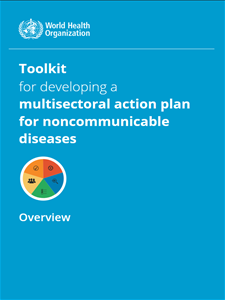Management of noncommunicable diseases
Noncommunicable diseases – including cardiovascular diseases, cancer, chronic respiratory diseases and diabetes – kill 41 million people every year. Prevention of NCDs is important. However, investing in better management is the other key component of the NCD response.
Investing in better management of NCDs is critical. Management of NCDs includes detecting, screening and treating these diseases, and providing access to palliative care for people in need. High impact essential NCD interventions can be delivered through a primary health care approach to strengthen early detection and timely treatment. Evidence shows such interventions are excellent economic investments because, if provided early to patients, they can reduce the need for more expensive treatment.
Countries with inadequate health insurance coverage are unlikely to provide universal access to essential NCD interventions. NCD management interventions are essential for achieving the global target of a 25% relative reduction in the risk of premature mortality from NCDs by 2025, and the SDG target of a one-third reduction in premature deaths from NCDs by 2030.


